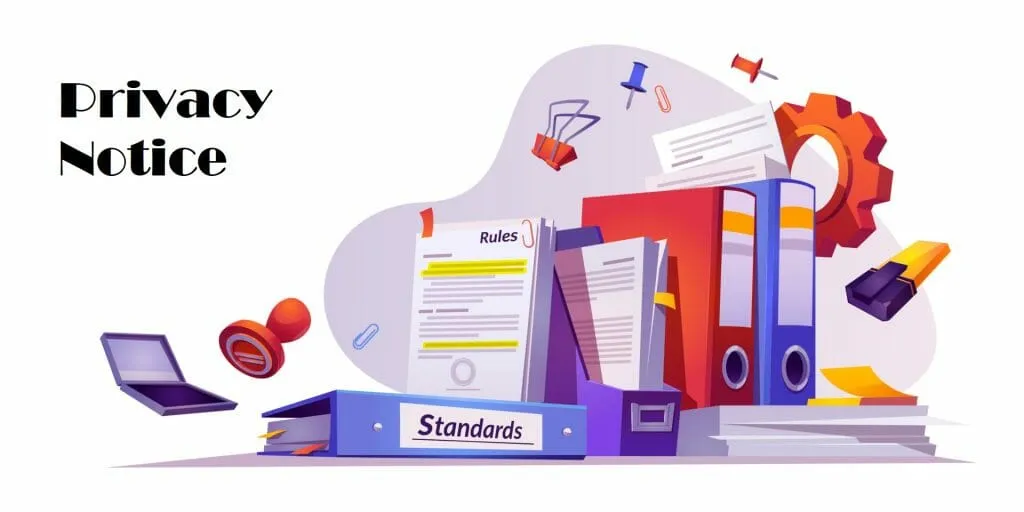Introduction
As a resultof the ever changing global privacy landscape creating a comprehensive and globally compliant data privacy notice has become an essential task for businesses operating in today’s data-driven landscape. A well-crafted data privacy notice not only safeguards the rights and privacy of individuals but also ensures legal and ethical practices, enhancing trust and credibility.
Understanding the Significance
A data privacy notice, often referred to as a privacy policy or statement, serves as a crucial communication tool between an organization and its users or customers. It outlines how the organization collects, processes, uses, and protects personal data. The notice not only fulfills legal requirements but also demonstrates an organization’s commitment to data protection and transparency. Crafting a globally compliant privacy notice is particularly vital for entities operating in multiple jurisdictions, as regulations such as the General Data Protection Regulation (GDPR) in the European Union or the California Consumer Privacy Act (CCPA) in the United States impose stringent obligations on data handling and privacy disclosures.
Key Components of a Global Compliant Data Privacy Notice
- Clear and Concise Language: Ensure that your privacy notice is written in clear and easy-to-understand language. Avoid jargon or technical terms that might confuse users.
- Identity of Data Controller: Clearly state the identity and contact details of the data controller responsible for the data processing. This helps individuals know whom to contact if they have questions or concerns.
- Purposes of Data Collection: Specify the purposes for which personal data is being collected. Explain how the data will be used, such as for account creation, order processing, or marketing communications.
- Legal Basis for Processing: Outline the legal basis on which data is being processed. Common legal bases include consent, contractual necessity, legal obligations, vital interests, and legitimate interests.
- Types of Data Collected: Provide a detailed list of the types of personal data being collected, such as names, contact information, payment details, and browsing behavior.
- Data Sharing and Recipients: Disclose whether personal data will be shared with third parties, such as service providers, business partners, or affiliates. Specify the categories of recipients and the purpose of sharing.
- International Transfers: If personal data is transferred across international borders, outline the safeguards in place to protect data during such transfers, such as Standard Contractual Clauses or Privacy Shield compliance (if applicable).
- Data Retention Period: Explain how long personal data will be retained and the criteria used to determine retention periods. This helps users understand how their data will be managed over time.
- Individual Rights: Inform users of their rights, including the right to access, rectify, erase, restrict processing, and object to data processing. Provide instructions on how these rights can be exercised.
- Security Measures: Describe the security measures in place to protect personal data from unauthorized access, breaches, or loss. Highlight encryption, access controls, and other relevant safeguards.
- Cookies and Tracking Technologies: If your website or services use cookies or tracking technologies, explain their purpose, the types used, and how users can manage their preferences.
- Updates to the Privacy Notice: State how and when updates to the privacy notice will be communicated to users. Regularly review and update the notice to reflect any changes in data processing practices.
Tailoring to Global Regulations
When crafting a global data privacy notice, it’s crucial to consider the various data protection regulations that may apply to your business. Some key regulations include:
- GDPR: If your organization processes data of individuals in the European Union, ensure compliance with GDPR principles such as lawful processing, data minimization, and the right to be forgotten.
- CCPA: If you handle personal information of California residents, abide by CCPA requirements, including providing opt-out mechanisms for data sales and offering specific rights related to data access and deletion.
- LGPD: If your operations extend to Brazil, adhere to the Lei Geral de Proteção de Dados (LGPD), which mandates transparent data processing and grants rights to Brazilian data subjects.
- APEC CBPR: If you operate in Asia-Pacific Economic Cooperation (APEC) member economies, consider aligning with the Cross-Border Privacy Rules system to facilitate data transfers between participating economies.
- Other Jurisdictions: Research and incorporate applicable data protection laws from other jurisdictions where you operate or have customers.
Ensuring Compliance and Building Trust
Crafting a global compliant data privacy notice is not a one-time task but an ongoing commitment to data protection and transparency. Regularly review and update your privacy notice to reflect changes in your data practices and evolving regulatory landscapes. Prioritize user education by making the privacy notice easily accessible, possibly through a dedicated webpage or a link in your website’s footer.
Remember, a well-designed and transparent privacy notice can foster trust, enhance your brand’s reputation, and differentiate your organization in an era where data protection is a fundamental right and a competitive advantage. By prioritizing user privacy and adhering to global data protection standards, you can navigate the complex data landscape while respecting individual rights and expectations.
